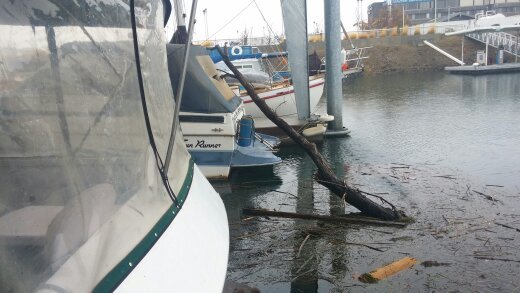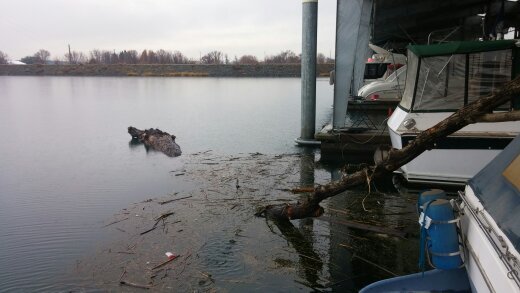Besides the reversing rapids in the narrow places, we get what are called current lines or tide rips in the water up here. You've probably seen them from the decks of the ships you've been on.
These are formed where water going one direction at X-speed runs into water going another direction at Y-speed. Or the speeds are the same but the directions are different. This intersection forms a visible line on the water and these intersections are great capture-and-hold points for all sorts of stuff. Huge floating eelgrass and kelp mats, branches, logs, pieces of lumber, trash like Styrofoam, bottles and cans, you name it, if it can float it can end up strung out along these current lines.


